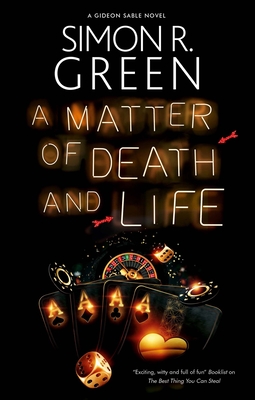 A Matter of Death and Life (Gideon Sable #2) by Simon R. Green
A Matter of Death and Life (Gideon Sable #2) by Simon R. Green Format: eARC
Source: supplied by publisher via NetGalley
Formats available: hardcover, ebook
Genres: paranormal, urban fantasy
Series: Gideon Sable #2
Pages: 192
Published by Severn House Publishers on March 1, 2022
Purchasing Info: Author's Website, Publisher's Website, Amazon, Barnes & Noble, Kobo, Bookshop.org, Better World Books
Goodreads
Master thief, rogue and chancer Gideon Sable is back for another fast-paced supernatural heist - and this time he has the vault of a Las Vegas casino in his sights
Judi Rifkin is one of the world's most successful collectors of the weird and unnatural. In a London underworld filled with criminals with very special talents, Judi is a force to be reckoned with.
And Gideon Sable - thief, rogue and chancer - owes her a very large favour.
Judi makes him an offer he can't refuse: steal her the legendary Masque of Ra, tucked up safe in a Las Vegas casino, and she'll wipe the slate clean.
This isn't Gideon's first heist by a long shot. But with old grudges threatening to cloud his judgment, an unpredictable crew who don't entirely trust each other and a formidable supernatural security team guarding his target, this job might be a gamble too far . . .
A Matter of Death and Life is the sequel to The Best Thing You Can Steal, and is the second supernatural heist thriller featuring master conman Gideon Sable from British SFF veteran and New York Times bestselling author Simon R. Green.
My Review:
The snark is turned up past 11 and all the way to 13 in this second book in the author’s Gideon Sable series. But don’t let the indication that this is the second book in the series fool you into thinking that all you need to read to get completely up to speed is that first book, The Best Thing You Can Steal.
Not that it isn’t a whole lot of snarky fun.
But the thing about the author of this urban fantasy series – along with several others, a couple of paranormal series and some epic space opera – is that all of his stories are told in the first person singular voice of the main character – in this case Gideon Sable.
Whether that featured antihero – because honestly, none of them are exactly heroes in any classic mold whatsoever – is John Taylor (Nightside), Eddie Drood (Secret Histories) or a whole host of others, the truth is that the voice of the protagonist reads like its the voice of the author. Because they all more or less the same voice – with just a few minor variations.
Not that that’s a bad thing, because I like my snark dial turned all the way up. This is an author who always makes me laugh out loud because his snark – and his characters – are clever in their actions and especially in their way with words. And those characters are more often archetypes than actual individuals. For readers who are familiar with the author’s previous works, they are archetypes that seem very, very familiar. Like old friends that you can’t totally trust not to either break your heart or your bank account. Or both.
Most likely both.
All of the above means that he’s an acquired taste. He just happens to be a taste I acquired a long time ago. Just like my nostalgia for Cincinnati Chili. It’s not something I’d want all the time, or even too often too close together, but when I have a taste for it, nothing else will do.
And I definitely had a taste for it – the author, not the chili – this weekend.
The story in A Matter of Death and Life is a direct followup to the events in the first book, The Best Thing You Can Steal. Gideon and his girlfriend, Annie Anybody, are roped into committing a heist for the person they cheated in the earlier book.
This time, they have to steal a supernatural and extremely creepy mask from a Las Vegas casino. The mask is supposed to grant eternal life and youth. Gideon’s, well, let’s call her his patron, wants the mask in order to get one up on her ex-husband. Gideon wants to get his own back from the current owner of the mask. His patron also wants to get one up on him – and it sure seems like someone is manipulating them both.
It’s going to be the job from hell. And it might just send them all there – and possibly back again – before it’s over. One way or another.
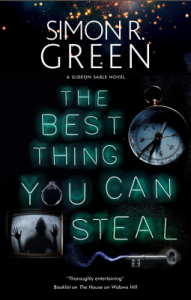 Escape Rating B+: This is a story where I don’t have any mixed feelings. I had a cracking good time with Gideon Sable and his more-misfit-than-usual crew as they took on Las Vegas. Calling this book a fantastic, slightly supernatural version of Ocean’s Eleven – complete with ALL the wisecracks – would be more accurate, and more fun, than anyone might have expected.
Escape Rating B+: This is a story where I don’t have any mixed feelings. I had a cracking good time with Gideon Sable and his more-misfit-than-usual crew as they took on Las Vegas. Calling this book a fantastic, slightly supernatural version of Ocean’s Eleven – complete with ALL the wisecracks – would be more accurate, and more fun, than anyone might have expected.
Clearly, I had fun. In fact, I had laugh out loud fun. It helps that Las Vegas as the public sees it, the casinos, the glitz and the fake glamor hiding a rapacious money machine, is a setting that is just ripe for all of the snarkitude that Gideon Sable can muster.
It’s also a wheels within wheels within wheels kind of story. As much as the setting reminds me of Ocean’s Eleven, the caper itself just screams Leverage – but with a twist. With multiple twists, some with lime and some with cyanide – or something worse, creepier and deadlier.
Under the supernatural gloss, this is a story about power, greed, paranoia and revenge all tied up in a great big ball of wrong. It’s also a cat and mouse game where each character believes they are one of the cats – only to discover that they are one of the mice after all. And that the real cat has been preparing them for dinner the entire time.
But the characters, especially Gideon and his crew, are also more than a bit of an in-joke. A joke that the reader only gets if they are familiar with at least the author’s previous urban fantasy series. Because Gideon Sable used to be someone else, before the real Gideon Sable died and our protagonist assumed his identity. The author closed out all of his previous urban fantasy series with Night Fall back in 2018. But Gideon and his crew sound an awful lot like many of his previous bands of misfits. So it’s possible that Gideon in particular used to be part of one of those other stories – until he had to find another identity.
Which means that the whole setup of Gideon Sable’s twisted version of our world could be one we’ve already seen, and Gideon himself could be someone we’ve already met. A possibility that teases me no end. But probably would not resonate with someone who had not been previously exposed to this author’s brand of Gordian Knot worlds within worlds and shadows hidden behind shadows.
But when I’m in the mood for extreme snarkitude, there’s none better. Gideon Sable, and all of this author’s characters, have refined smart-assery into a fine art – and sometimes that’s just what a reader needs to get through. So I hope Gideon Sable will be back in the not too distant future.

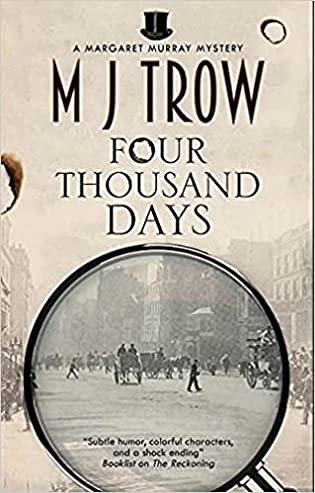 Four Thousand Days (Margaret Murray, #1) by
Four Thousand Days (Margaret Murray, #1) by 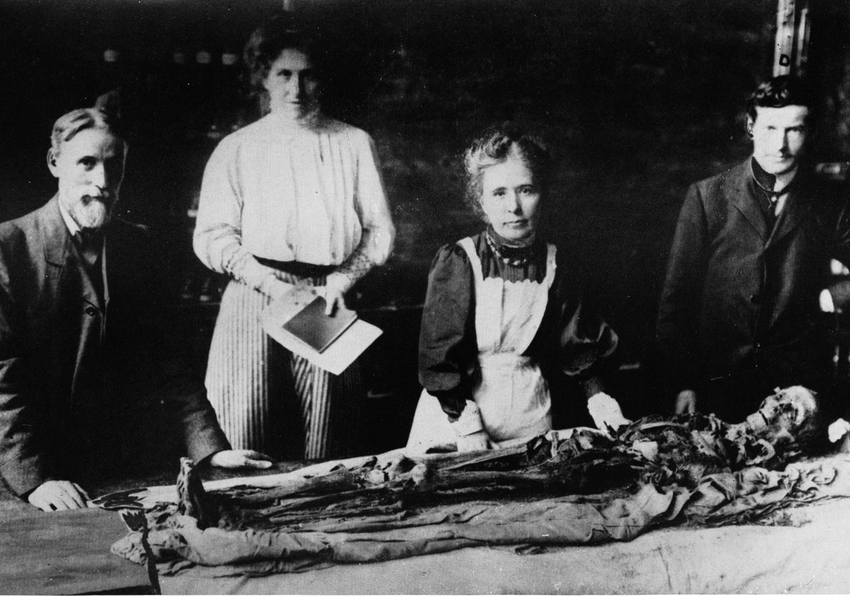
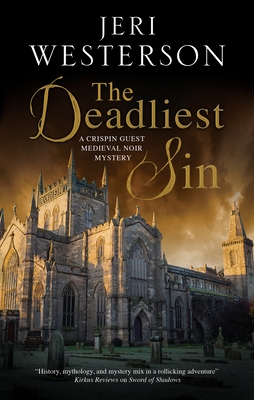 The Deadliest Sin (Crispin Guest Medieval Noir #15) by
The Deadliest Sin (Crispin Guest Medieval Noir #15) by 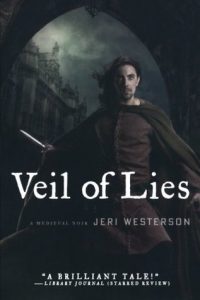 Escape Rating A-: Not every historical mystery series involves itself as much with the politics of its day along with the mystery, but from this reader’s perspective it seems like the best ones do, going all the way back to Ellis Peters’
Escape Rating A-: Not every historical mystery series involves itself as much with the politics of its day along with the mystery, but from this reader’s perspective it seems like the best ones do, going all the way back to Ellis Peters’ 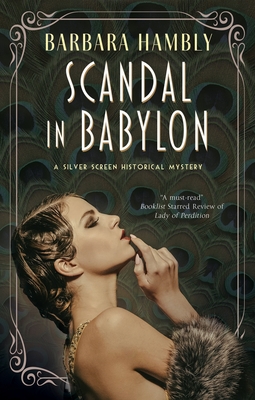 Scandal in Babylon by
Scandal in Babylon by 
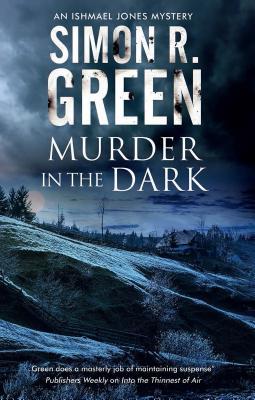 Murder in the Dark (Ishmael Jones, #6) by
Murder in the Dark (Ishmael Jones, #6) by 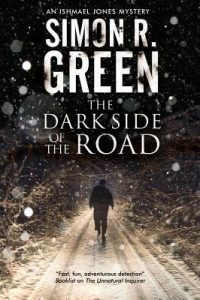 The stories in this series, for the most part, have been a play on the old country house murders. Ishmael met his romantic and investigative partner Penny Belcourt in the first book in the series,
The stories in this series, for the most part, have been a play on the old country house murders. Ishmael met his romantic and investigative partner Penny Belcourt in the first book in the series, 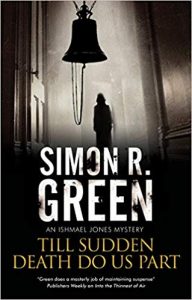 The thing that makes this series work is that in spite of any supernatural or extraterrestrial red herrings that may appear while Ishmael and Penny are desperately trying to figure out who’s bumping off the people they’re supposed to save, the reality turns out to be that the biggest, baddest and deadliest monsters in any setting are human. The evil that people are capable of doing to each other is much, much scarier than any mythical beast or raygun toting alien. That in the end the most horrible monsters are just people doing bad things because they’re selfish and greedy. And it’s that grounding in human monsters and human evil that keep the whole thing from flying over the top, jumping the shark, and landing in a cesspit full of slime monsters.
The thing that makes this series work is that in spite of any supernatural or extraterrestrial red herrings that may appear while Ishmael and Penny are desperately trying to figure out who’s bumping off the people they’re supposed to save, the reality turns out to be that the biggest, baddest and deadliest monsters in any setting are human. The evil that people are capable of doing to each other is much, much scarier than any mythical beast or raygun toting alien. That in the end the most horrible monsters are just people doing bad things because they’re selfish and greedy. And it’s that grounding in human monsters and human evil that keep the whole thing from flying over the top, jumping the shark, and landing in a cesspit full of slime monsters.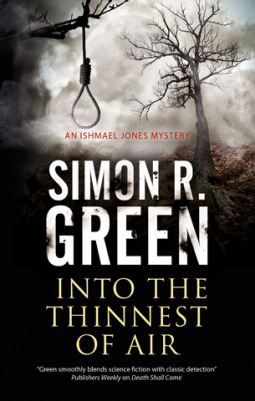 Into the Thinnest of Air (Ishmael Jones, #5) by
Into the Thinnest of Air (Ishmael Jones, #5) by 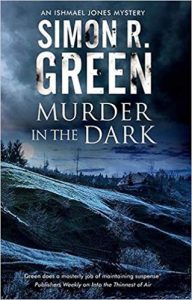 But Ishmael, who is not exactly human, doesn’t believe in the supernatural. He does, however, believe in the paranormal. In other words, he doesn’t believe in things that science will never be able to explain at all (supernatural) but does believe in things that science can’t explain yet (paranormal). After all, he is one. And he’s met plenty of others.
But Ishmael, who is not exactly human, doesn’t believe in the supernatural. He does, however, believe in the paranormal. In other words, he doesn’t believe in things that science will never be able to explain at all (supernatural) but does believe in things that science can’t explain yet (paranormal). After all, he is one. And he’s met plenty of others.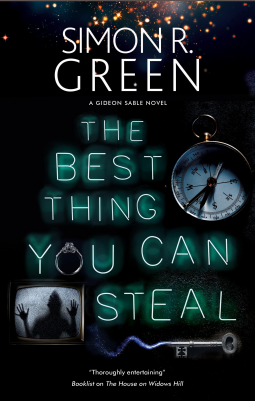 The Best Thing You Can Steal by
The Best Thing You Can Steal by 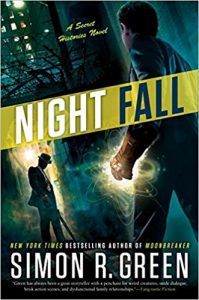 After all, Gideon Sable used to be someone else. So even though all of the author’s previous series except one all crashed, burned and ended together in a smoking pile at the close of
After all, Gideon Sable used to be someone else. So even though all of the author’s previous series except one all crashed, burned and ended together in a smoking pile at the close of 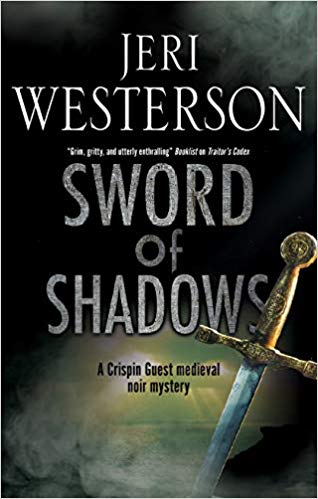 Sword of Shadows by
Sword of Shadows by 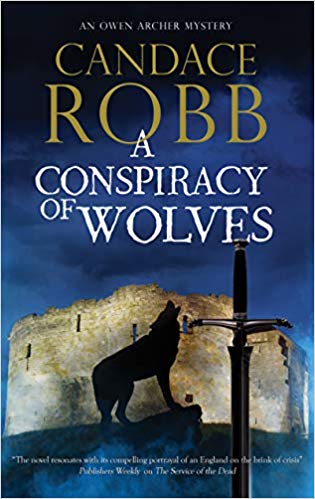 A Conspiracy of Wolves (Owen Archer #11) by
A Conspiracy of Wolves (Owen Archer #11) by 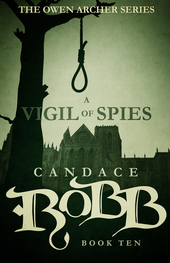 When I reviewed the previous book in the
When I reviewed the previous book in the  Escape Rating B: The Owen Archer series is an absolutely terrific historical mystery series. Owen, and his wife Lucie the apothecary, change and grow over the course of their adventures, and the author does an excellent job of exploring the world of 14th century York and the swirl of politics that surrounds the capital of the North. This is certainly a series that deepens as it goes, and will reward readers who start at the beginning. After all, Owen comes to York in
Escape Rating B: The Owen Archer series is an absolutely terrific historical mystery series. Owen, and his wife Lucie the apothecary, change and grow over the course of their adventures, and the author does an excellent job of exploring the world of 14th century York and the swirl of politics that surrounds the capital of the North. This is certainly a series that deepens as it goes, and will reward readers who start at the beginning. After all, Owen comes to York in 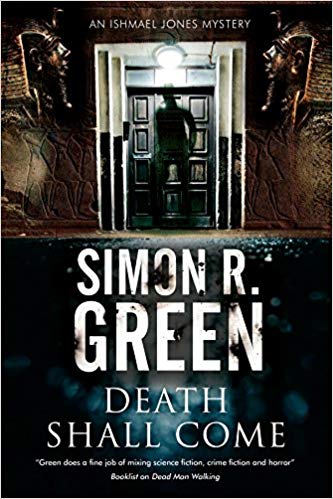 Death Shall Come by
Death Shall Come by 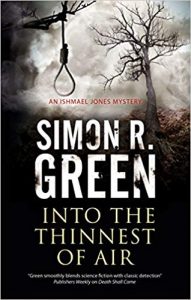 In the end, that’s what flips this series from mystery/horror to science fiction. Mummies don’t walk, but strange, weird and dangerous things do fall out of the sky. Ishmael should know – after all, he’s one of them.
In the end, that’s what flips this series from mystery/horror to science fiction. Mummies don’t walk, but strange, weird and dangerous things do fall out of the sky. Ishmael should know – after all, he’s one of them.